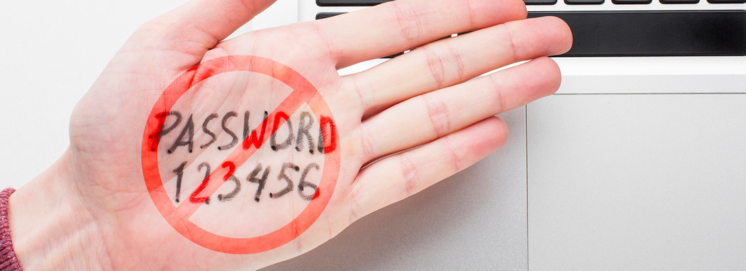Passwords: Our Primary Defense Against Cyber Threats – A New Era of Cybersecurity

Passwords are our primary defense against cyber threats. Yet, many of us fall into the trap of using generic, easy-to-remember passwords, compromising our security. This blog will delve into the risks associated with generic passwords, what US and Canadian businesses and users should understand about the UK’s new ban on weak default passwords, and strategies for creating robust, secure passwords.
Table of Contents
The Problem with Generic Passwords
When setting up new internet-connected devices, it’s common to encounter default passwords like Admin or 12345. These generic passwords are convenient but offer little protection against cyber threats. Cybercriminals can easily guess these passwords, gaining unauthorized access to devices and sensitive information.
A study by IoT management platform Asimily revealed that routers constitute 75 percent of infected connected devices. Other IoT devices, such as digital signage systems, security cameras, and medical devices, are also frequently targeted. The widespread use of weak, default passwords significantly contributes to this vulnerability.
What We Can Learn from the UK’s New Password Legislation
In response to the growing threat of cybercrime and the proliferation of connected devices, the UK government has implemented new laws to enhance cybersecurity. It’s critical for users around the world to take note of these new regulations, as they set a clear precedent; just as Europe’s GDPR came before the US’ CCPA, this password ban is likely just the first cybersecurity regulation of its kind.
The UK’s new password regulations mandate that:
1. Universal default passwords like Admin or 12345 are banned. Each device must have a unique password.
2. Manufacturers must provide a public contact for reporting security vulnerabilities and specify how long the device will receive security updates.
3. The duration of security updates must be clearly stated at the point of sale, either on the box or online.
Implications for Manufacturers and Users
For Manufacturers
If similar legislation is adopted in the US, manufacturers will need to set unique default passwords for each device and comply with additional security requirements. While this increases complexity and costs, it also provides an opportunity for manufacturers to lead in cybersecurity.
Manufacturers must maintain compliance records and be available for reporting concerns, increasing their workloads. Enforcing these laws, particularly for devices made abroad, presents additional challenges. A centralized database of approved vendor products vetted for compliance could help streamline enforcement and ease the burden on importers and distributors.
For Users
Enhanced legislation promises increased security for users, making devices less susceptible to cyber-attacks. However, users must be prepared to manage complex default passwords. Educating users on good password practices can help mitigate potential password overload and anxiety.
By teaching users how to create strong, unique passwords and the importance of regularly updating them, we can ensure that the benefits of enhanced security are fully realized without overwhelming users. Additionally, providing resources and tools to simplify password management, such as password managers, can significantly reduce the burden on users while maintaining high-security standards.
The Role of Strong Passwords
While the UK’s new legislation is a significant step toward improving cybersecurity, users everywhere must also take responsibility for their online security by using strong, unique passwords and enabling additional security features.
NordPass’s Annual Most Common Passwords List
NordPass’s annual Most Common Passwords list highlights the prevalence of weak passwords. Some of the most common passwords include 123456, admin, 12345678, and password. These passwords can be cracked in less than a second, underscoring the need for stronger password practices. Users should create passwords that are complex and unique to each account to avoid falling into this trap.
Tips for Creating Strong Passwords
1. Use a Mix of Characters: Incorporate uppercase and lowercase letters, numbers, and special characters. A password like Pa$$w0rd! is much stronger than password123. The variety of characters makes it harder for hackers to crack the password through brute force attacks.
2. Avoid Common Words and Phrases: Do not use easily guessable words or phrases such as password, admin, or qwerty. Instead, use a random combination of words or create a passphrase using unrelated words, such as BlueBanana$Dance77.
3. Make It Long: The longer the password, the harder it is to crack. Aim for at least 12 characters. Password length exponentially increases the difficulty for hackers to perform successful attacks. For instance, a 16-character password is significantly more secure than an 8-character one.
4. Use a Password Manager: Password managers can generate and store complex passwords for you, eliminating the need to remember each one. Tools like LastPass, 1Password, and Dashlane can create random, strong passwords and save them securely, so you only need to remember one master password.
5. Avoid Reusing Passwords: Each of your accounts should have a unique password. Reusing passwords across multiple accounts increases the risk that a breach of one account could compromise others. If a hacker gains access to one password, they can potentially infiltrate all accounts using the same password.
A New Era of Cybersecurity
The UK’s ban on weak default passwords is a crucial step in enhancing cybersecurity that will likely be followed in nations around the world in years to come. While it places significant responsibility on manufacturers, it also empowers users to take control of their online security. By adopting strong password practices and staying informed about cybersecurity best practices, we can collectively reduce the risk of cyber threats and protect our digital lives.
This example from the UK highlights the importance of proactive measures in cybersecurity—a lesson the US and Canadian businesses can heed to strengthen its own cyber defenses.




